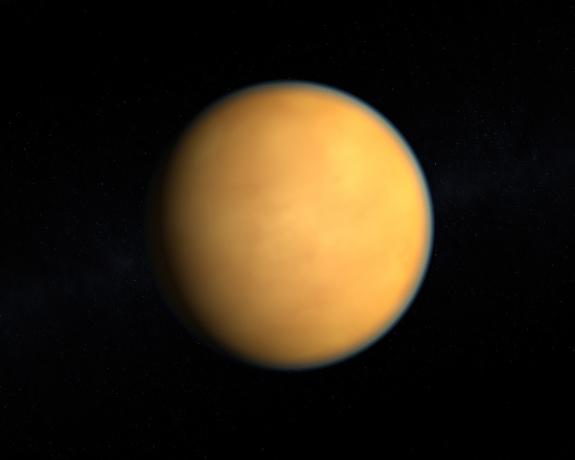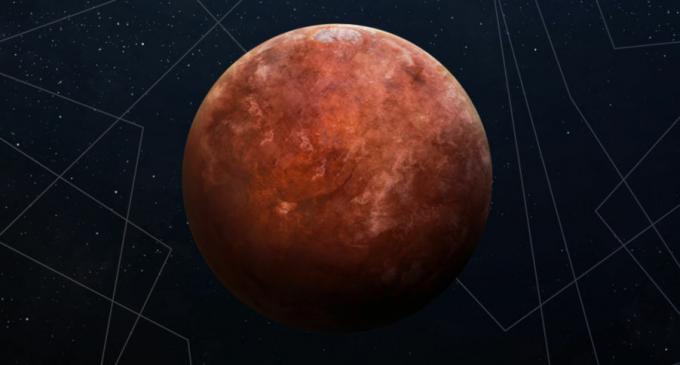Saturn is the sixth planet from the sun and is the second largest planet in Solar system, second only to Jupiter. Its dimensions are 9 times larger than Earth's. Due to its composition, is also known as gas giant and stands out for the beauty of the ring system that surrounds it, which are formed from fragments of rock and ice.
Saturn became the planet with the most moons in the Solar System, in 2018, counting on 82 in total. Through exploration missions such as Cassini, Titan, the largest of these natural satellites, has been found to have characteristics comparable to those of the early Earth.
Read too: What are exoplanets?

Saturn General Data
- Diameter: 116,464 km.
- Surface area: 42,612,133,285 km2.
- Pasta: 568,319 x 1021 kg.
- Density: 0.687g/cm3.
- Distance from the Sun: 1.4 billion km.
- Natural satellite: 82 in total, with 53 known moons and 29 to be confirmed.
- Rotation period: 10.7 hours.
- Translation period: 29.4 Earth years.
- Average temperature: - 138 º C.
- Atmospheric composition: hydrogen predominance (H2) and helium (He).
Do not stop now... There's more after the advertising ;)
Saturn Characteristics
Saturn is the second largest planet in the Solar System, with 9 times the size of the Earth. It is relatively far from the Sun, being the sixth planet from that star, taking 29.4 Earth years, or 10,756 days, to complete a circle around it. O its rotation movement is short, lasting only 10.7 hours.
Unlike rocky planets like Earth, Saturn's surface is not solid. The planet is known as a giant gaseous, which is due to the physical state of the elements that make up its structure. Saturn is predominantly formed by hydrogen, helium in smaller proportions and a very small amount of methane. O its core, in contrast, is dense and solidified, surrounded by hydrogen metallic liquid and liquid hydrogen. Even with this composition, Saturn's density is less than that of water.
The recorded images of the planet show yellowish, brown and white tones on its surface, due to its atmosphere, which, in addition to the mentioned gases, has ammonia in its composition, as well as frozen water. Sometimes large storms can occur, becoming apparent in the form of white bands.
See too: 8 fun facts about the Solar System
Rings of Saturn
THE presence of surrounding rings in its equatorial plane constitutes the main feature of Saturn. The first observations of this system were made in the 17th century by Galileo Galilei and corroborated later in the same century by the Dutch astronomer Christiaan Huygens.
Saturn's rings are formed by larger particles and fragments of rock and ice, originating from asteroids, comets and moons that were destroyed by the gravitational force of the planet. They are distributed horizontally for up to 282,000 km, with variable thickness that can go from a few meters to 1 km, according to academic literature.

The outer rings have a more intense shine and, therefore, they are more easily observable through telescopes and their nomenclature was defined from the ends, following the alphabetical order. With that, the main systems constitute the following sequence:
- D, the inner and near-planet ring group, having the weakest glow,
- C, B and A, the last two being the brightest,
- E, F and G, most recently discovered and most external.
This appellation was, in terms, discontinued by the most recent discoveries of new rings.
Between rings B and A, there is a 4,700 km gap known as Cassini Division, classified as the most extensive among the bands that separate the groups of rings identified so far. Its discovery was made by astronomer Jean Dominique Cassini in 1675.
moons of saturn
Saturn has 82 natural satellites, of which 53 are confirmed and another 29 are still awaiting confirmation, according to information from NASA. With the discovery of 20 moons, announced in October 2019, the planet became the holder of the largest number of natural satellites in the Solar System, a position that was previously occupied by Jupiter. Saturn's moons range in size from 2 to thousands of kilometers in diameter, surpassing the dimensions of known planets.
Titan was the first moon of Saturn to be discovered, which occurred in the year 1655. She is the Saturn's largest moon and the second largest in the Solar System, with a diameter of 5,149 km, being larger than the planet Mercury.
Its atmosphere is quite dense, composed of nitrogen and methane. Titan's surface is compared to the primitive Earth, although it is much cooler. It is formed by ice, methane and ethane in liquid and gaseous states. it is believed that there oceans of water under the icy structure, which would give the satellite a great potential to house life forms.

Saturn's second largest moon is Rhea., with a diameter of 1,529 km. This satellite draws attention by the presence of oxygen and carbon dioxide in its atmosphere, besides being formed essentially by ice and rock.
The third biggest is japetus (1,472 km in diameter) and has a characteristic color, divided into a lighter and a darker tone, also composed of rock and ice. Saturn's other large moons are dione and tethys, with respectively 1,123 and 1,066 km in diameter.
Saturn exploration
From the second half of the 20th century it was possible to get more details about Saturn's atmosphere and surface from the space missions sent to the planet. The first spacecraft, Pioneer 11, was sent by NASA in 1972 and arrived on the planet in September 1973. With it, new moons were discovered, as well as the F-ring system.
In 1980 and 1981, the twin probes Voyager 1 and Voyager 2, also North American, made a closer approximation of Saturn and allowed the detailed observation of its surrounding rings.
In 1997, the most important mission on the planet began: the Cassini-Huygens. The destination was reached on July 1, 2004, and the mission extended until September 15, 2017. Among his greatest contributions are:
- the discovery of lakes on the moon Titan,
- taking samples of Saturn's atmosphere for the first time,
- the discovery of new moons,
- the record in images of hurricanes at the poles of the planet and thousands of other photographic records,
- some unpublished data collected.
It is also noteworthy that in 2005 the European Space Agency's Huygens probe landed on Titan, which is the first landing on another planet's lunar surface.
Also access: How does a rocket launch work?
Curiosities about Saturn
- Saturn's observations began in the Mesopotamia with the Assyrians.
- The name Saturn was defined by the Romans, representing the god of agriculture.
- Due to its peculiarity, it is a planet widely used in pop culture. Examples are the series startrek and the movies 2001: A Space Odyssey and Wall-E.
- The planet has a magnetic field 578 times more powerful than Earth's.
- The circular shape of Saturn's rings and the maintenance of its orbit are defined by the presence of the smaller moons between them, more specifically by the force of gravity of these satellites.
- The moons Titan and Enceladus have great potential to harbor life, as they have Water and different types of Hydrocarbons in his compositions.
By Paloma Guitarrara
Geography teacher



